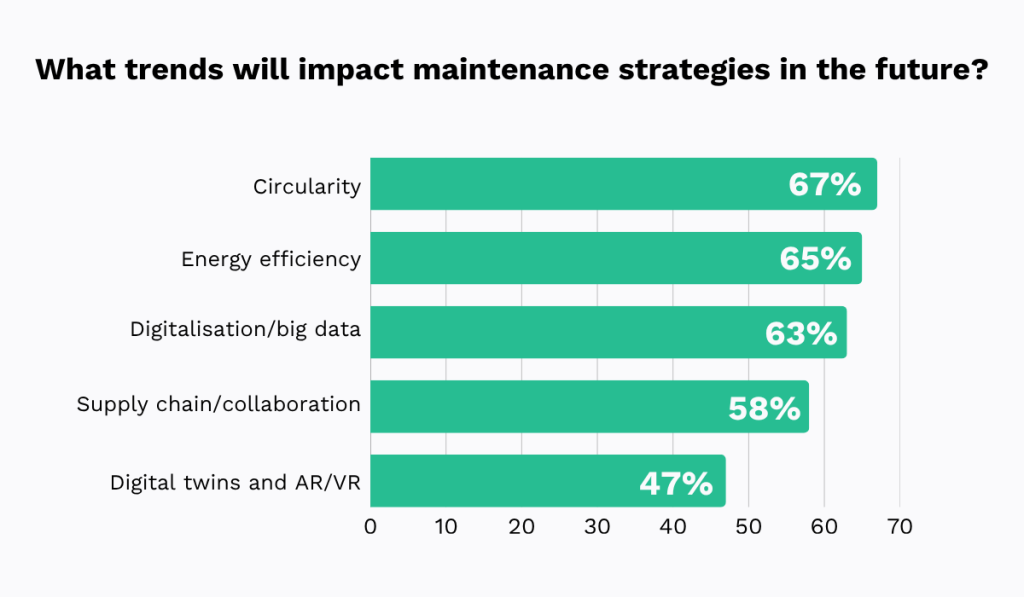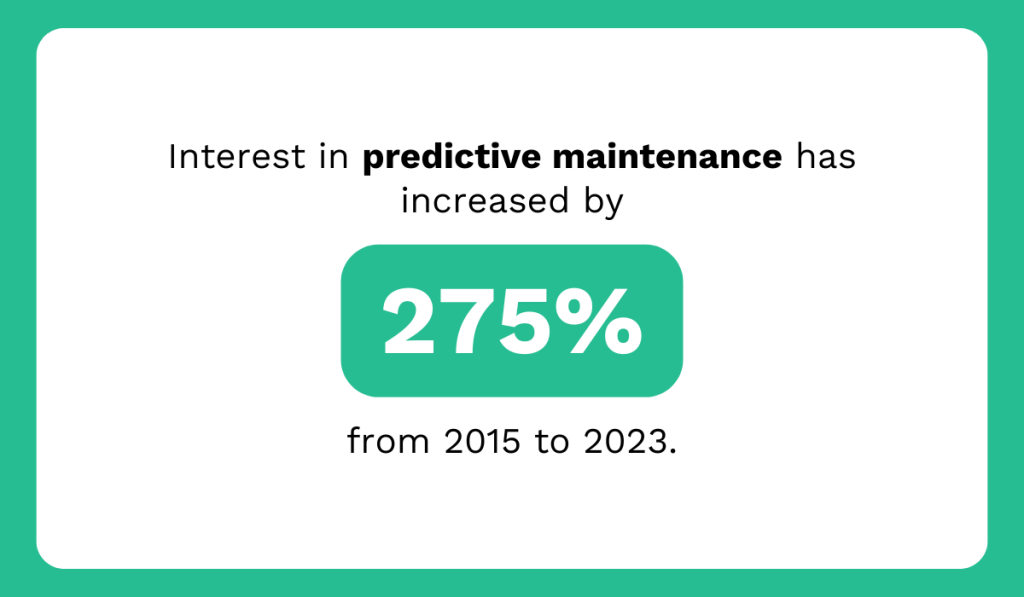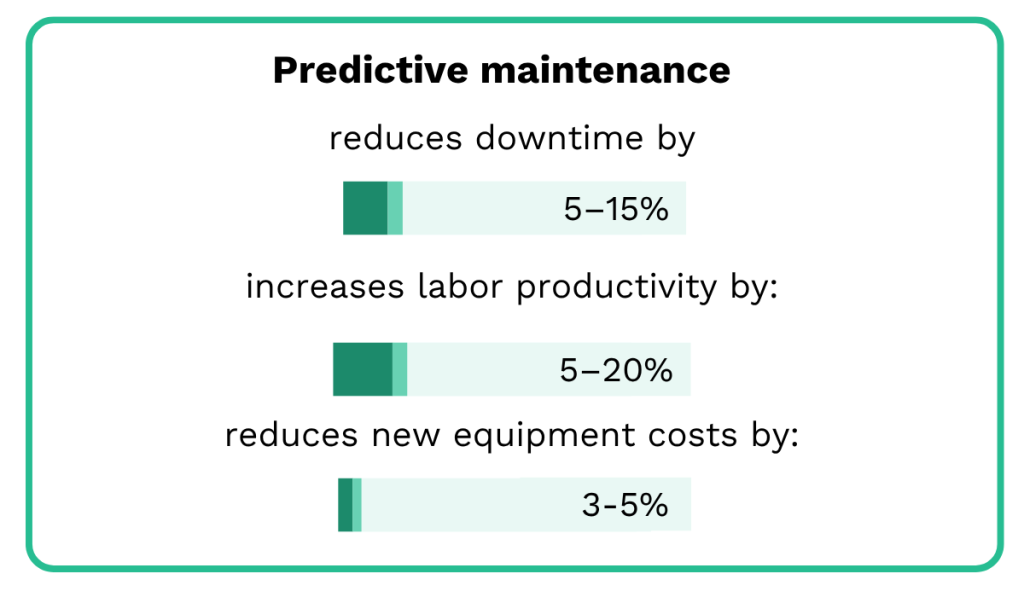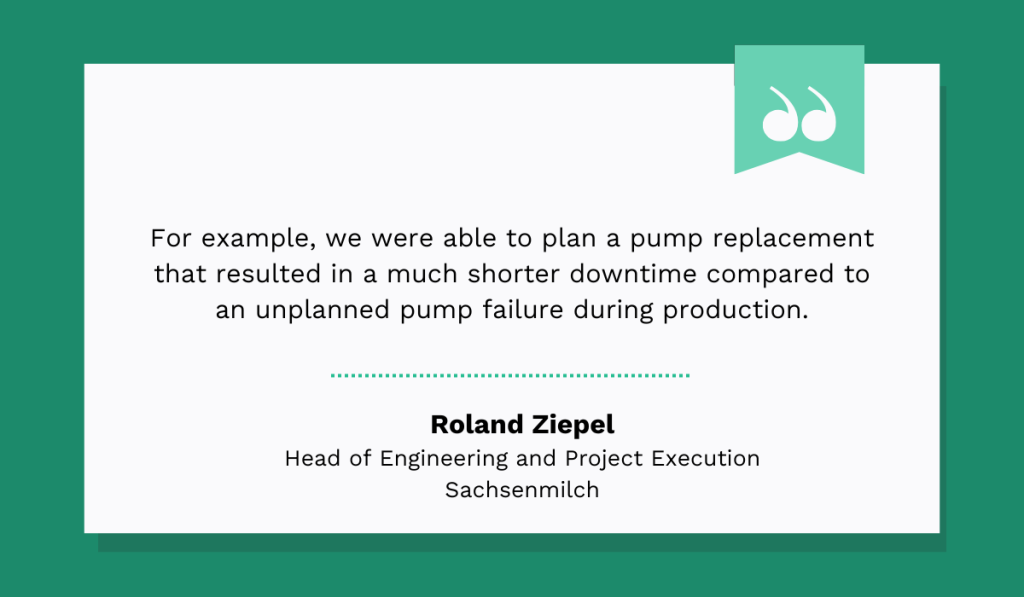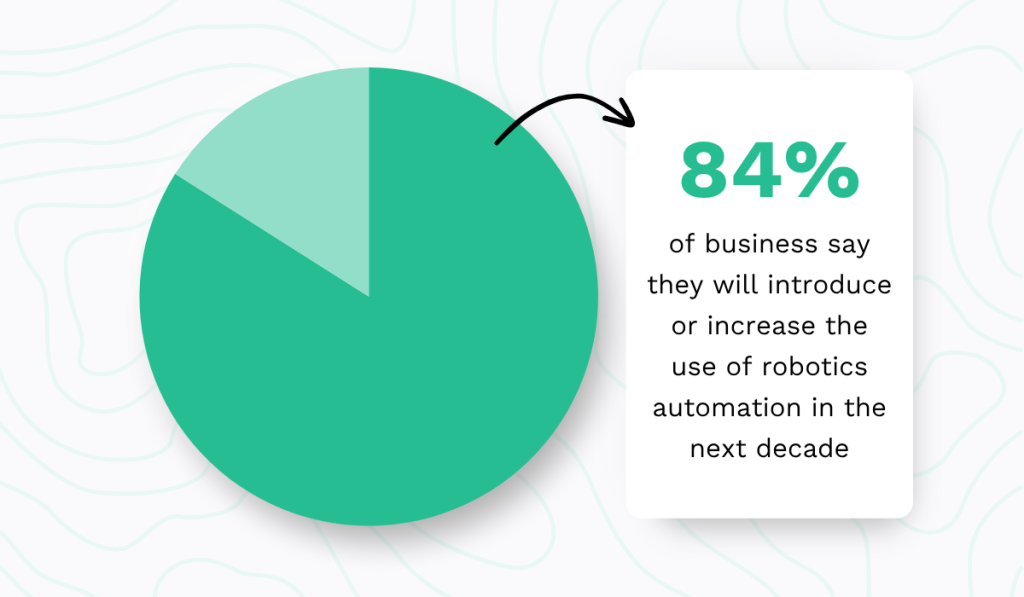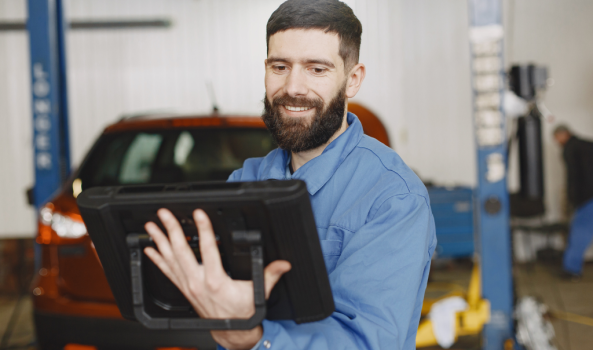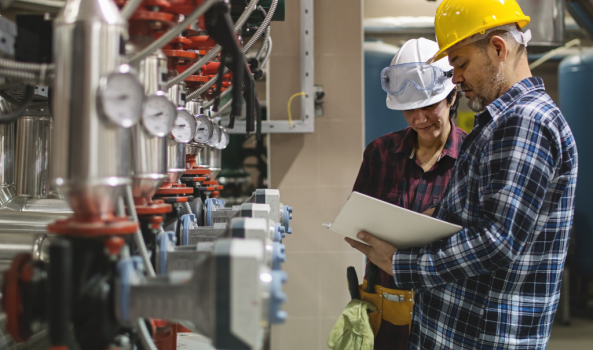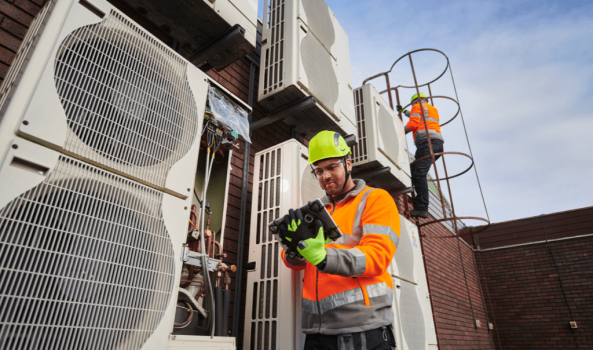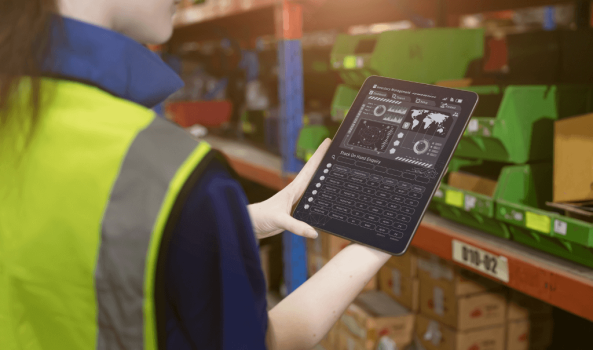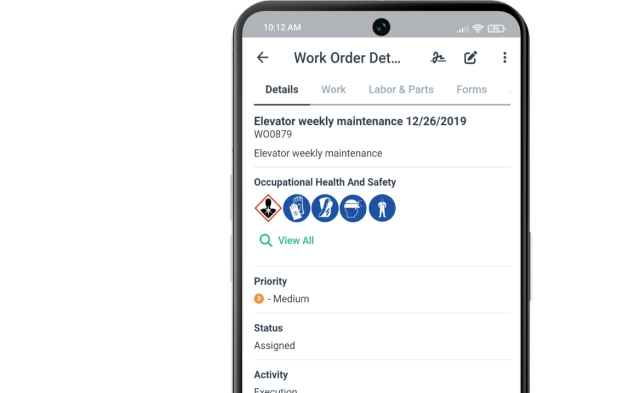Get a Free WorkTrek Demo
Let's show you how WorkTrek can help you optimize your maintenance operation.
Try for freeKey Takeaways:
- CMMS adoption increases every year.
- 84% of businesses plan to introduce or expand the usage of robots.
- IoT allows companies to shift from time-based to condition-based maintenance.
Maintenance isn’t the first thing that comes to mind when most people think of cutting-edge technology.
It’s often seen as routine, behind-the-scenes, and firmly rooted in the physical world of tools, checklists, and elbow grease.
Nevertheless, maintenance is undergoing a quiet revolution, full of exciting new technologies and upkeep strategies.
In this article, we will explore seven trends that are redefining what maintenance looks like in the age of automation and why each of these advancements matters.
Smarter CMMS Solutions
Computerized Maintenance Management Systems (CMMS) have existed for decades, but their capabilities have advanced significantly.
Today’s CMMS platforms differ significantly from the early systems of the 1960s, which lacked screens and relied on punch cards processed by IBM mainframes.
Now, they automate nearly every aspect of maintenance, including:
- Work order management
- Inventory tracking
- Preventive maintenance scheduling
- Invoicing
- Purchase order analytics
This shift helps explain why 62% of organizations reported using a CMMS in 2024, up from 49% the previous year.
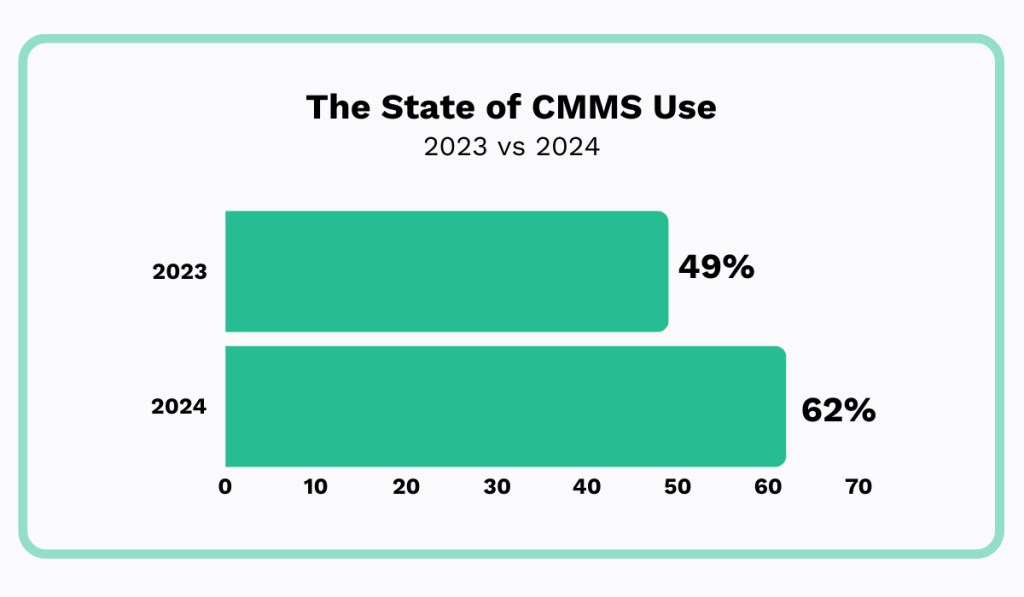
The increase is expected.
CMMS solutions have become essential due to the efficiency they bring to maintenance operations.
Consider our platform, WorkTrek.
It not only streamlines work order processes but also functions as a maintenance command center.
Every time a work request is submitted, a WO is completed, a spare part is used, or a task is scheduled, WorkTrek records the activity automatically in one centralized system accessible from any location.
It doesn’t matter if you’re on a laptop in the office or out in the field using a mobile phone.
The result is improved visibility across all operations.
With WorkTrek’s intuitive dashboard, you can monitor everything from outstanding tasks to unexpected expenses:
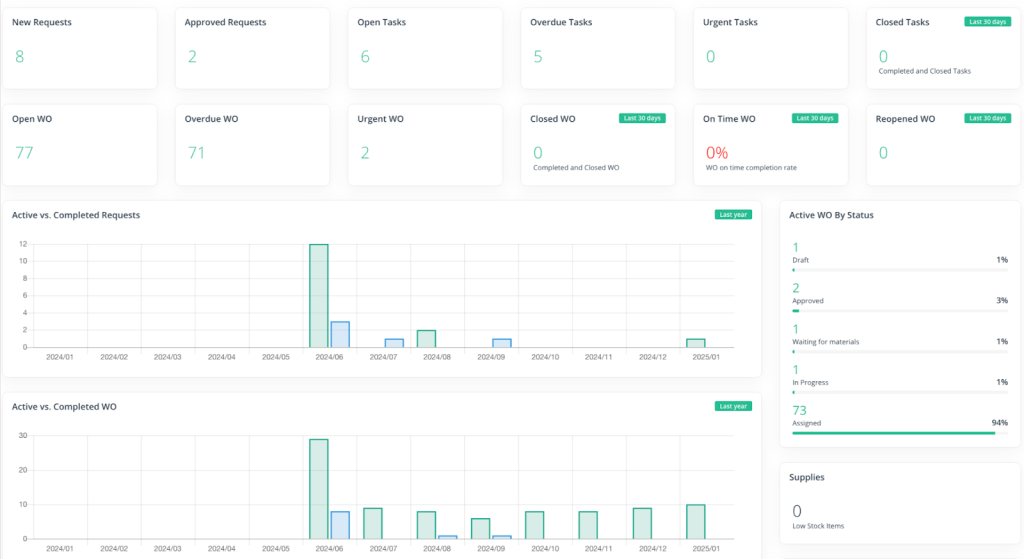
When deeper analysis is needed, our analytics feature offers over 50 pre-built reports and more than 20 KPIs, giving you the insights you need to plan and coordinate more effectively.
The benefits are measurable:

At InterEnergo, an international energy company based in Ljubljana, the team experienced the advantages of WorkTrek directly.
Matjaž Valenčič, Operations and Maintenance Manager, explains:
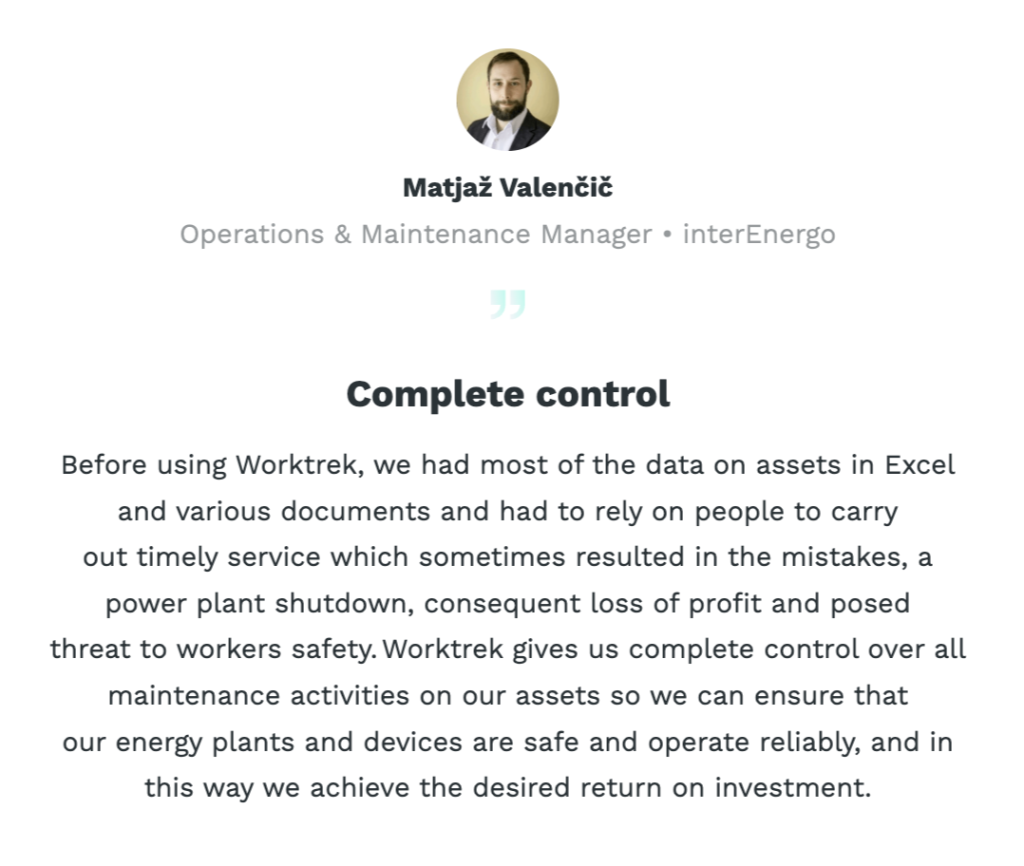
At the end of the day, the future of maintenance is undeniably data-driven.
That’s why CMMS solutions aren’t just a trend but mission-critical tools for maintenance teams of all sizes and industries.
Their capabilities will continue to expand.
Digital Twins for Real-Time Insights
A digital twin is a virtual replica of a physical asset or system.
It uses real-time data from sensors and operational systems to simulate, monitor, and analyze asset behavior.
This provides a comprehensive view of an asset’s condition, enabling the early detection of anomalies or potential issues.
According to a 2023 report by ABB, the value of digital twin technology is already widely acknowledged.
When asked which trends would influence their future maintenance strategies, 47% of respondents chose digital twins.
One organization that has adopted this technology is ConocoPhillips Canada, the Canadian division of the global exploration and production company.
The company implemented digital twin systems at two key facilities: Surmont’s Central Processing Facility 2, and Montney’s C-11-K central processing plant.
The impact was significant.
According to Rune Tufta, their Operations Support and Optimization Manager, the technology is driving improvements in safety, cost, efficiency, and production performance:
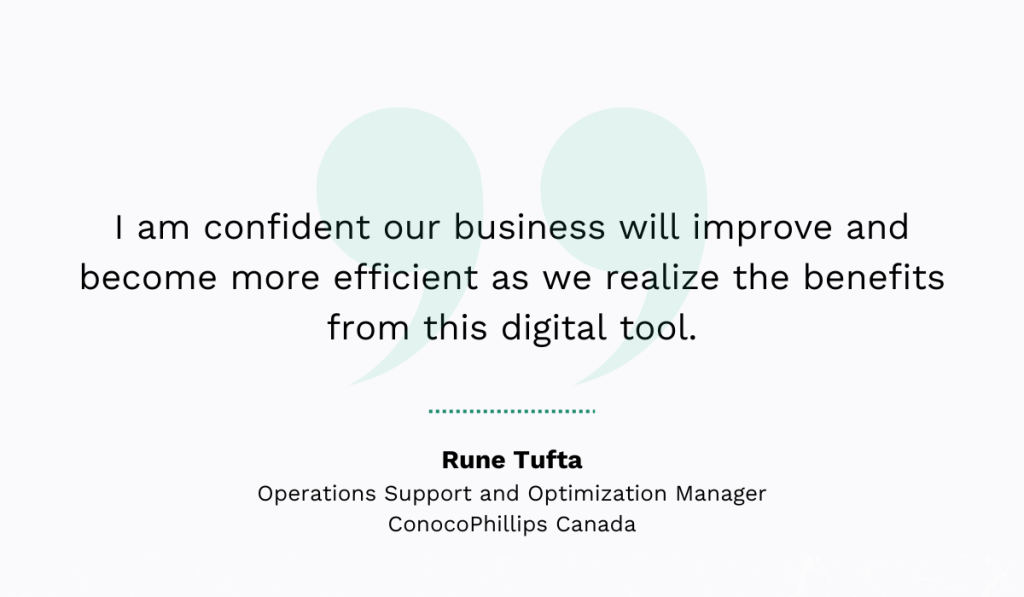
One of the strengths of digital twin technology lies in its versatility.
As the team at ConocoPhillips Canada notes, the range of potential applications continues to expand. New use cases are still being discovered.
Their technicians now use the system to locate misplaced equipment, leave maintenance notes (as shown below), plan scaffolding, and estimate heights and distances for crane operations.

In practice, digital twins place a detailed virtual model of the facility at the user’s fingertips.
This level of visibility enables faster decision-making, supports proactive maintenance, and improves resource management across all levels of operation.

Remote Monitoring with IoT
The Internet of Things (IoT), particularly IoT sensors, complements digital twin technology by enabling continuous, real-time monitoring of equipment.
When installed on assets, these sensors track key performance indicators and equipment health without requiring manual checks.
Below are some practical examples of how sensors support condition monitoring:
| Vibration Analysis | Detect abnormal vibrations in rotating machinery, indicating issues like misalignment, imbalance, or worn-out components. |
| Temperature Monitoring | Track temperature fluctuations that may signal overheating or impending mechanical failures in motors, pumps, and similar equipment. |
| Pressure/Flow Monitoring | Identify leaks, blockages, or wear by monitoring pressure and flow rates in systems involving pumps, compressors, or hydraulics. |
Access to these insights without manual inspection supports quicker responses and helps shift maintenance strategies from reactive to proactive.
Andrew Kunzmann, Chief of Technology at Tracsis US, a leading provider of technology solutions to the world’s railroad industry, agrees:
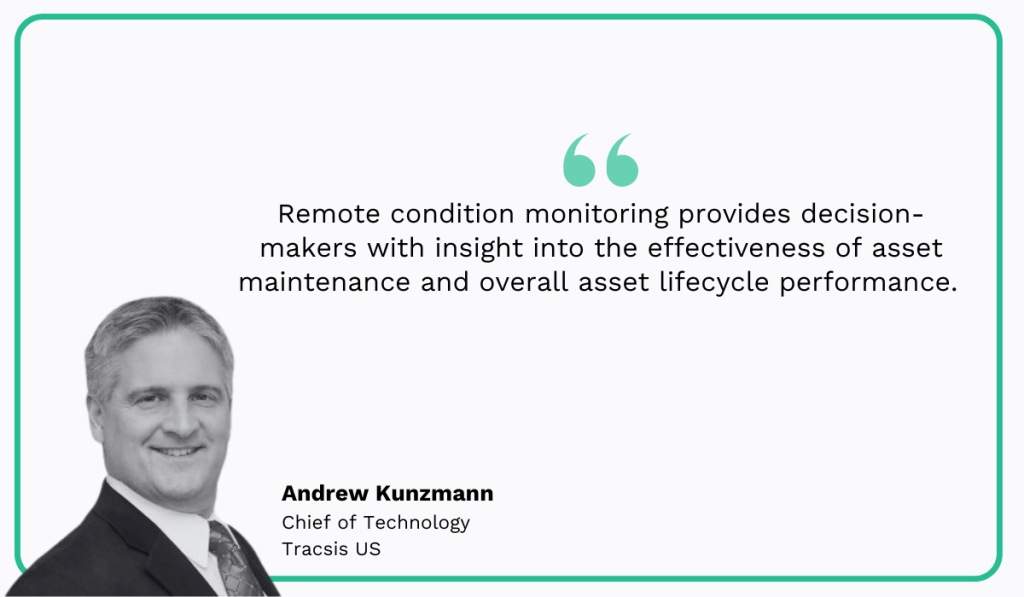
This technology enables early detection of wear, damage, or system failures, forming the basis for condition-based maintenance (CBM).
Unlike traditional time-based maintenance, where service is performed at regular intervals regardless of an asset’s condition, CBM allows intervention only when it is needed.
This targeted and data-driven approach reduces downtime, increases asset longevity, and improves cost-efficiency across operations.
Predictive Maintenance Powered by AI
Combining IoT sensors with artificial intelligence creates a maintenance approach more advanced than condition-based maintenance: predictive maintenance (PdM).
PdM applies machine learning and AI algorithms to predict when equipment is likely to fail, allowing maintenance to be performed just in time.
According to Siemens’ 2023 report, predictive maintenance is rapidly becoming mainstream among global manufacturers.
Interest in PdM has increased by 275% over the past seven years.
This growth reflects the clear benefits of PdM.
A 2022 study by Deloitte highlights measurable results.
Companies that utilize predictive maintenance report a 5–15% reduction in facility downtime, a 5–20% increase in labor productivity, and a 3–5% decrease in new equipment costs.
These improvements represent a significant competitive advantage.
Sachsenmilch, one of Europe’s largest dairy producers, experienced these benefits firsthand.
The company recently implemented AI-driven predictive maintenance to monitor its complex production infrastructure.
The result has been higher equipment availability, reduced maintenance effort, and considerable cost savings.
Roland Ziepel, Head of Engineering and Project Execution at Sachsenmilch’s Leppersdorf site, shares a concrete example:
By identifying the end of a pump’s service life in advance, the company saved a low six-figure sum, according to Ziepel.
Looking at all the data and real-world results, it’s easy to see why predictive maintenance is gaining significant momentum.
It removes the guesswork of fixed maintenance schedules, replacing them with intelligent, condition-based insights that help prevent failures before they occur.
No other maintenance strategy can match this level of efficiency.
Augmented Reality for Real-Time Guidance
Augmented Reality (AR) overlays digital information onto the physical environment using smartphones, tablets, or AR glasses.
To illustrate this, consider the popular 2016 game Pokémon Go.
However, AR is not limited to gaming. It also has practical applications in maintenance.
As shown in the video below, AR enables technicians to view asset schematics during work and receive real-time support from remote experts.
This significantly speeds up repairs and reduces the risk of errors.
For example, five U.S. Navy ships recently adopted AR technology for this purpose.
Sailors now wear a simplified AR headset that allows remote experts to see and hear from their point of view.
While wearing the headset, sailors can also access technical manual excerpts, maintenance requirement cards, 3D images, design models, or schematics—all while receiving live guidance from SMEs.
NSWC PHD Commanding Officer Capt. Anthony Holmes praised the innovation:
Remote assistance of this kind enables sailors to resolve issues more quickly and independently, saving time and resources.
There’s no more need for SME travel. Technicians can connect with anyone, anywhere in the world, almost instantly.
AR—and its closely related counterpart, virtual reality—are unlocking new frontiers in maintenance that were once unimaginable.
They make maintenance faster, smarter, and safer.
It will be interesting to observe how this technology develops further.
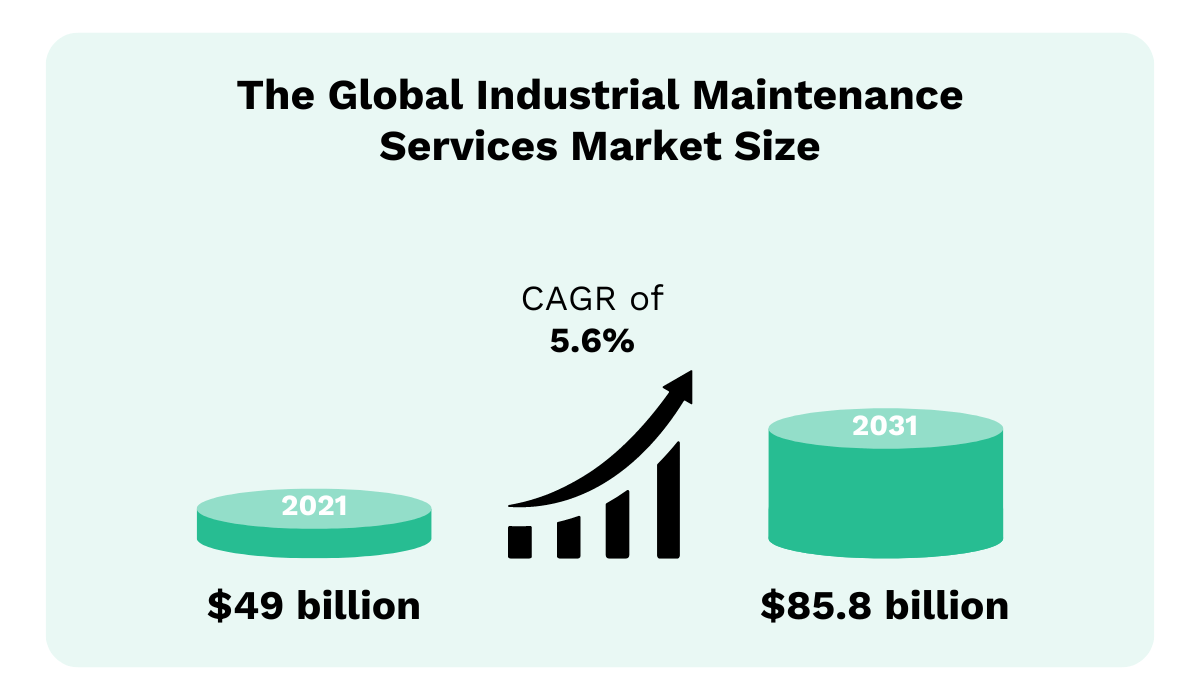
Virtual Reality for More Efficient Training
Unlike AR, which overlays digital elements onto the real world, virtual reality (VR) creates a fully immersive digital environment that completely engages the human senses.
In the field of maintenance, this opens up many opportunities, especially in training.
In these interactive virtual environments, technicians can practice various procedures without needing physical equipment, minimizing the risks of safety incidents and asset damage.
The video below demonstrates a VR training program for conducting a pre-flight inspection.
This technology can be applied across many other scenarios, especially those involving high safety risks.
For FL Technics, a Lithuanian company specializing in aircraft maintenance, repair, and overhaul, the safety gains are the most valuable benefits of VR.
Ramunas Paškevičius, IT Project Manager at FL Technics, says they use VR to prepare mechanics for potentially dangerous tasks:
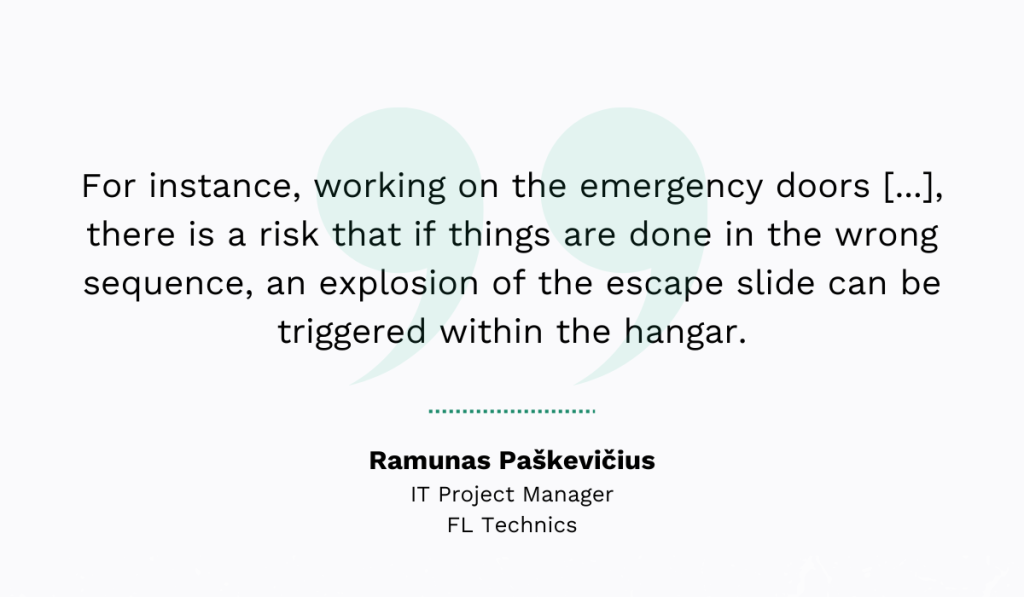
At best, incidents cause financial loss. At worst, they can seriously injure the mechanic or others nearby.
That’s why proper training is essential.
According to Paškevičius:
“Virtual reality can show mechanics that event—and even allow them to feel it.”
That is the real power of VR in maintenance.
It provides a safe and cost-effective environment where technicians can make mistakes, learn, and improve without incurring risk.
This ultimately prepares them to walk into real-life tasks with confidence and all the necessary knowledge.
Increased Use of Cobots
Collaborative robots, also known as cobots, are designed to work safely alongside humans, assisting with repetitive, hazardous, or precision-driven tasks.
This technology improves maintenance efficiency, reduces physical strain on workers, and increases overall safety.
ABB’s 2025 survey shows that robots are no longer just science fiction.
84% of businesses plan to introduce or expand the use of robotic automation across their operations in the coming decade.
Maintenance is no exception.
Although cobots have traditionally been used in production, their use in maintenance is growing quickly.
For example, Lam Research’s Dextro™ is the first collaborative robot built specifically for maintaining semiconductor manufacturing equipment:
Dextro is mobile and works alongside engineers and technicians in fabrication facilities, taking on tasks that are time-consuming, prone to error, or dangerous.
Russell Dover, General Manager, Service Product Line at Lam Research, explains Dextro’s potential impact:
“A single application could take up to 30 minutes, including docking and undocking time. Done manually, it can typically take two to four times longer.”
He adds that a single Dextro unit can service up to 100 Lam Flex chambers at a maintenance frequency of once per month.
Cobots like Dextro are just the beginning.
With their precision, efficiency, and ability to improve safety and uptime, collaborative robots will likely become even more prevalent within maintenance operations across all industries.
Conclusion
Now that you know what technologies are available, you can explore each trend further.
You don’t have to rush to implement everything immediately, but knowing what’s happening and what’s possible will give you an advantage.
Undoubtedly, these tools will become increasingly integrated into maintenance practices.
However, only maintenance experts who are prepared will be able to use them effectively.




